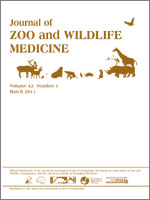Entodiniomorphid ciliates occur in the hindgut of both captive and wild African great apes. These ciliates do not form cysts, and therefore they are more susceptible for degradation. This present study focused on the survival, quantification, and decomposition processes of Troglodytella abrassarti trophozoites in the feces of captive chimpanzees. Fecal samples were examined using wet mounts and the merthiolate-iodine-formaldehyde concentration method, and the number of ciliates was expressed as ciliates per gram, which did not differ when examined from three different samples of the same feces. Trophozoites of T. abrassarti survived 5–15 hr after defecation at 25°C under aerobic conditions. Decomposition of trophozoites began immediately after defecation; however, most of the trophozoites had a compact shape and visible cilia. Trophozoites, although without cilia, can be detected in the feces 55–65 hr after defecation, although most of the trophozoites were fragmented. The total number of ciliates in the sample started to decrease 35–55 hr after defecation. The absence of entodiniomorphid ciliates in fecal samples could not be caused by delayed feces fixation; instead, the absence was due to low sensitivity of coproscopic techniques. However, because of quick morphologic changes of trophozoites, accurate identification of ciliates in older samples may be difficult or even impossible.
How to translate text using browser tools
1 March 2011
Survival and Morphologic Changes of Entodiniomorphid Ciliate Troglodytella abrassarti in Chimpanzee Feces
Ilona Profousová,
Klára J. Petrželková,
Kateřina Pomajbíková,
David Modrý
ACCESS THE FULL ARTICLE
Coproscopic diagnostics
decomposition process
Entodiniomorphida
Pan troglodytes
Troglodytella abrassarti





